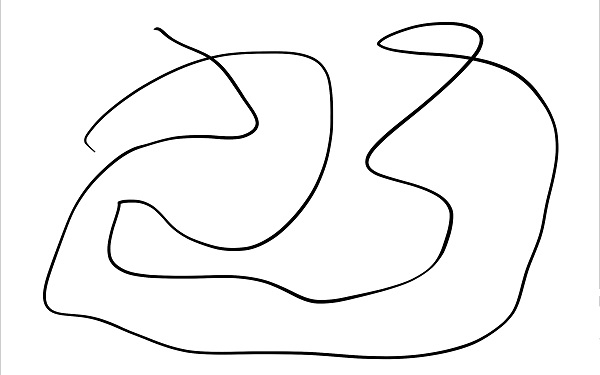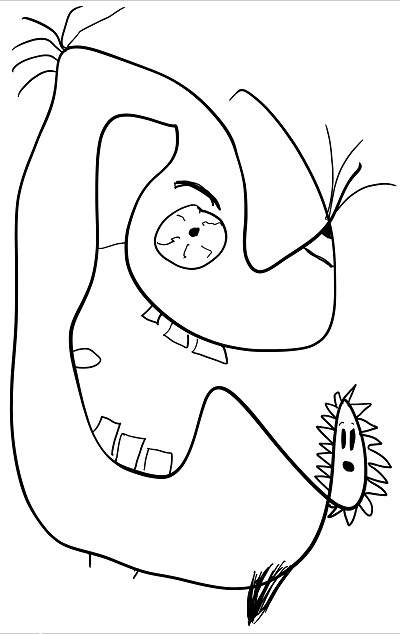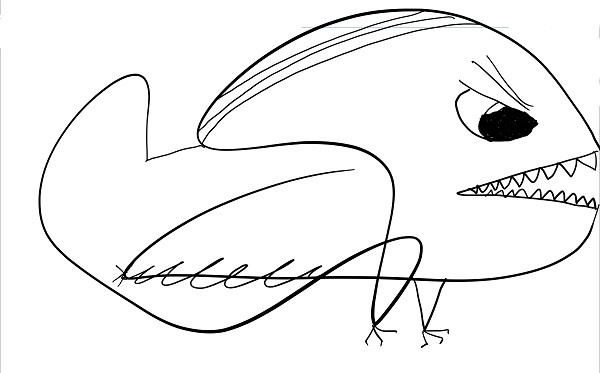I Thought Impro Was Bullsh*t: Recovering Rationalist 02
I thought Impro was bullshit.
Impro is a collection of essays on improvisational theatre by Keith Johnstone. It’s become a cult classic among non-thespians. Somehow these people think it applies to real life. How daft.
I did spend nearly all of my high school free time in the theatre, but it was always backstage as a techie. We built sets and hung lights. We didn’t need to understand the actors to operate power tools. Wearing all black and hiding in the shadows, the tech theatre kids would poke fun at the actors’ silly warmups. Look at those weirdos.

Impro is chock-full of the types of exercises we’d laugh at. Point at things and SHOUT the wrong name for it! Pretend to give your partner a gift, but don’t say what it is! Then they have to act as if they know what you’ve given them, how silly! Wear a mask, run around pretending you’ve been transformed into a different person! Swear it really happened!
I agreed with Johnstone’s take down of education, I thought his analysis of status was spot-on, but I continued to roll my eyes at the silly exercises.
What was the point? Surely my brain can come up with something better to say than random crap from my subconscious…right?
…
Years later I reread Impro and loved it. What changed?
The first time around I hadn’t tried any of the exercises. I had thought the point of Impro was to generate funny scenes for an improv show. I didn’t want to be on stage, or to behave in a silly manner, so I didn’t try anything.
Impro’s exercises can make for good improv. But the main goal of the exercises is to put you in a different mindset.
There’s an entire mindset, an entire mode of being that I didn’t have easy access to. I was rejecting it to be more “logical”.
This mindset isn’t mystical or anything like that, we’ve all been there. When you have a flowing conversation, when art flows from your brush, when great ideas arise from nothing–that’s what we’re looking for.
Scribble Monsters
Here’s the easiest way I’ve found to get to that mindset. It’s an exercise called ‘Scribble Monsters.’ Play along if you’d like.
Grab a pencil and paper. Draw a big scribble all over the paper, like this:

Now set a two minute timer. Turn the scribble into a monster, but don’t stop drawing for the full two minutes.

What makes a ‘good’ scribble monster? You can’t judge a scribble monster by standard artistic merits. There’s no reference monster to compare it to.
The only way to ‘fail’ at Scribble Monsters is to get stuck, to pause and overthink what you’re ‘supposed’ to be drawing.
If you’re a logical, rational, STEM nerd like me, you might find this exercise difficult. I often stop my pencil to think about how many legs I should draw, or how large a wing should be to make the monster appear ‘balanced’.
Draw enough scribble monsters and you can start to tell the difference between monsters that got stuck and monsters that came alive.
What’s unique about this exercise? Three aspects stand out:
- A nonsensical situation - the scribble is inherently meaningless
- Time pressure - the only goal is to keep the pencil moving
- A sense of emergence - where does the monster come from?
Something about these three aspects allow a monster to come to life.
Scribble Monsters is one of many exercises in Lynda Barry’s intriguing book, Making Comics. You won’t find any drills about perspective or ellipses in Making Comics. Everything is handwritten. The pages are covered with strange doodles and marks and odd color choices.
Look again at the exercises in Impro, and you’ll see the same three aspects jump out.
Nonsensical Situations

Shout the wrong name for objects around you! Act out scenes but switch high and low status at random! Act as if you’re at the bus stop while your partner thinks he’s in the living room!
Each of these exercises are so nonsensical that it’s impossible to complete them and think at the same time. Johnstone claims that these strange exercises create funnier improvisations, and more realistic scripted theater. Like the Scribble Monster, the failure modes are overthinking, or blocking.
Impro puts you in all sorts of nonsensical situations, and yet a coherent scene arises. What’s going on?
Time Pressure

In Scribble Monsters, we’re asked to keep moving the pencil without stopping. In Impro too, we find exercises with strong time pressure.
Johnstone describes a game where he asks a student to reach into an imaginary box, and describe what’s in it. At first the student may take some time to think, and say something unimaginative, like ‘old clothes’. Johnstone explains: “If they’re worried about failing, then they’ll have to think first; if they’re being playful, then they can allow their hand to make its own decision.”
With rapid prompting from Johnstone, the student begins to answer freely:
‘What do you take out?’
‘A cricket ball.’
‘Take something else out.’
‘Another cricket ball.’
‘Unscrew it. What’s inside?’
‘A medallion.’
‘What’s written on it?’
‘“Christmas 1948.”'
The speed of Johnstone’s questions puts the student into a different operating mode:
“If I make people produce object after object, then very likely they’ll stop bothering to think first, and just swing along being mildly interested in what their hands select”
Time Pressure shuts off our ‘thinking’ side, and yet we’re still able to answer. How?
Emergence

The third unique aspect of these exercises is emergence.
Impro describes a guided exercise called Automatic Writing, where the student is instructed to ‘grab’ an imaginary book from a bookshelf:
‘Mime taking a book from a shelf,’ I said.
‘Yes.’
‘What colour is it?’
‘Blue.’
‘Did you have to think up the colour or did you see it?’
‘It was blue’
The rapid fire nature of the questions and encouragement to ‘see’ the imaginary book create a similar state of mind to the Scribble Monsters exercise.
What comes out is a surprisingly complete story:
‘Find me a line of verse.’
‘So that we …’
‘Are you seeing it or inventing it?’
‘Seeing it.’
‘Next word.’
‘It’s blurred.’
‘I’ve given you a magnifying-glass…’
“I continued drawing the poem out of her, until she’d ‘read’ two verses. Then I stopped because she was finding the experience frightening. So did the audience, because it didn’t seem to be a poem she was inventing, yet someone was inventing it.”
So that we can be happy
Together in our loves
Since you were away
I have been alone.
Having been so close
I cannot live again
Many years will pass
Till I live again.
All of these strange exercises result in some sort of emergence, a sense that something is arising from nothing. Monsters draw themselves, scenes spring up from simple constraints, complete poems arise with the vaguest of prompting.
Where does it come from?
Divided Brains
All this talk of ‘things’ arising from nowhere might set off your bullshit detector. It certainly set off mine. And yet these similar ideas arise across domains, even in ‘rational’ ones like math and science.
“It is impossible to study the works of the great mathematicians, or even those of the lesser, without noticing and distinguishing two opposite tendencies, or rather two entirely different kinds of minds. The one sort are above all preoccupied with logic…The other sort are guided by intuition and at the first stroke make quick but sometimes precarious conquests, like bold cavalrymen of the advance guard.” - Henri Poincaré, Intuition and Logic in Mathematics
Is there a real phenomenon underpinning this emergent behavior?
To answer, let’s take a detour into neuroscience, particularly the work of Iain McGilchrist and his book, The Master and His Emissary.
McGilchrist’s work is in neuroscience, particularly in the field of the left-right hemisphere divide. You may have heard that the left-right brain divide is a myth, and McGilchrist would actually agree–the pop-science version of the left-right divide is inaccurate.
At a time when this kind of research was being poo-pooed, McGilchrist continued to study the field. His fascination stemmed from this observation: every advanced species on Earth has developed this separation in the brain, and the higher up the intelligence chain you go, the more the two brains are divided. Why this division? Why is communication between the two halves so strongly inhibited?
McGilchrist arrives at two important points.
First, the distinction between the hemispheres lies not in what each side of the brain does but in how each side of the brain does.
Scientists studying the left-right brain divide were looking for functions–which part of the brain is for drawing? What about doing arithmetic? When researchers saw both hemispheres lighting up, they gave up on existing ideas about left-right brain separation.
What the scientists missed is this: each hemisphere has a different way of looking at and behaving in the world.
Myth: Left brain is for math and logic. The right brain is for art and emotions
Modern Hypothesis: the left hemisphere is narrowly focused on separating and understanding parts. The right hemisphere sees things as whole, and works to make relational connections in context.
For instance, a bird might need narrowed focus to pick a bug off of a leaf, but also must maintain a broader awareness to avoid getting eaten by the neighborhood cat. A unified brain can’t do both, hence the division.

Each hemisphere inhabits a way of being, not a limited set of functions. The left hemisphere is more inclined to see mechanical representations, divisions, and to seek legibility. The right hemisphere, interconnectedness, organic shapes, and the gestalt of flowing structures.
The left stands on the riverbank creating legible representations of water, while the right stands in the river, experiencing it.
McGilchrist’s second assertion is that western society produces minds which are overly reliant on the left-hemisphere.
The split between the hemispheres is stronger in humans than in any other animal. Moreover, this strong division might lead us to strongly prefer one hemisphere over the other:
“at the level of moment-to-moment activity the hemispheres may operate a ‘winner takes all’ system - that is, if one hemisphere is 85 percent as efficient at a task as the other, we will not tend to divide the work between them in a ratio of 0.85:1.00, but consistently use whichever is better to do the whole job”
Imagine if the bird was so focused on grabbing the bug, that it totally ignored the cat lurking behind.
The left hemisphere believes it’s good enough to do everything on it’s own. It’s more than happy to take over if it thinks it can do an adequate job. From within the left hemisphere’s oversimplified model of the world, everything feels complete and understandable.
The Left Hemisphere and You
Which hemisphere do you utilize more often?
Did you get stuck with the Scribble Monster? Are you constantly overthinking? Do you struggle to have flowing conversations?
Which hemisphere does your environment push you towards?
You probably live in a very legible box, with nice flat walls meeting at 90 degree angles. Your nearest city is probably arranged on a grid, from 1st to 105th street. Consider how often your focus is narrowed down to 5.9, 13, or 27 inch screens. When you see nature, it’s a tidy houseplant in a pot, or the neighborhood tree emerging from the concrete sidewalk.

A society fixated on the left-hemisphere rewards more of the same, further pushing the society towards division, lack of nuance, more abstraction, more exploitation, and less empathy. Sound familiar?
The more illegible skills are denigrated as less useful, and we continue to lose access to the right hemisphere.
Reclaiming the Right Hemisphere
As human beings, we all have the natural ability to embody both of these ways of being, but we’ve largely forgotten one of them.
Let me rephrase that. There’s an entirely different way of being that you’re not using well! One of expanded awareness, connectedness, and embodiment.
This way of being is exactly what’s needed for a flowing conversation, for dancing, for flirting, for writing first drafts, for handling nuance, for connecting disparate ideas, for teams to work together as one.
If we wish to reintegrate this way of being, we need to remember how to act with the right hemisphere.
Unfortunately, you can’t just tell the right hemisphere to come out, or ask the left to give up the reins. The nature of the left is to go it alone, and the right to not pay attention to rational arguments.
What you can do is perform certain activities that allow the inhibitors to turn off, activities where the left realizes it cannot do the task at hand, and where the right can shine.
This is exactly the point of the exercises in both Making Comics and Impro. Each of these exercises get us used to accessing the right hemisphere.
- Nonsense - the left hemisphere is better at pinning down and grasping concepts. When faced with nonsense, the right comes out to play.
- Time pressure - the left hemisphere is better at slowing down and dissecting parts, so when faced with a time crunch, it abdicates to the right.
- Emergence - the right hemisphere can’t put into words what it’s doing, so ideas ‘appear’ from nowhere.
Scribble Monsters are a gateway, allowing you to access this entirely different state of being.
Working Together
When I talk about being a ‘recovering rationalist’, it’s this over-reliance on the left hemisphere that I’m talking about.
I’m not suggesting we lobotomize our left hemispheres. Rather, that we learn techniques to allow the right to show up when appropriate. Our right hemisphere still needs the left to break down complexity and develop legible models of our modern world.
“What the left hemisphere offers is, then, a valuable but intermediate process, one of ‘unpacking’ what is there and handing it back to the right hemisphere, where it can once again be integrated into the experiential whole”
And it’s only with this integration of the right hemisphere that we can fully develop our intuition; intuition needed for breakthroughs, high level operation, or even mastery.
Mathematician Terry Tao divides math education into three stages:
- “The ‘pre-rigorous’ stage, in which mathematics is taught in an informal, intuitive manner, based on examples, fuzzy notions, and hand-waving
- The ‘rigorous’ stage, in which one is now taught that in order to do maths ‘properly’, one needs to work and think in a much more precise and formal manner
- The ‘post-rigorous’ stage, in which one has grown comfortable with all the rigorous foundations of one’s chosen field, and is now ready to revisit and refine one’s pre-rigorous intuition on the subject, but this time with the intuition solidly buttressed by rigorous theory.”
Moving from the ‘pre-rigourous’ to the ‘rigorous stage’, we reject the right hemisphere’s intuition for the left’s ‘more correct’ rationality. But the task isn’t complete until the left passes its findings back to the right, enabling the creation of new mental models, improved intuition, and the ‘post-rigorous’ stage.
Learn to use both ways of being. Understand how to use them together.
And when you find yourself blocked, draw a scribble monster.

Shoutout to Tasshin, Shish, and Illegibleparadise for their feedback on this article.
Further Reading
- The Recovering Rationalist
- Recovering Rationalist Starterpack
- The Master and His Emissary by Iain McGilchrist
- Impro by Keith Johnstone
- Making Comics by Lynda Barry
- There’s more to mathematics than rigour and proofs by Terry Tao
- Make Your Own Damn Mental Models by Tasshin
